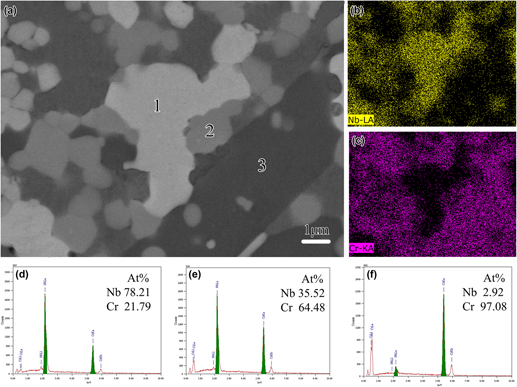Article contents
Microstructure and mechanical properties of Laves phase NbCr2-based composites toughened with Cr phase fabricated by spark plasma sintering
Published online by Cambridge University Press: 24 June 2016
Abstract

Laves phase NbCr2-based composites toughened with different volume fractions of Cr phase were fabricated by spark plasma sintering (SPS). The microstructural evolution and mechanical properties of these spark plasma sintered NbCr2/Cr composites were investigated. The mechanical properties evaluations indicate that the introducing of Cr phase consolidated by SPS has a beneficial effect on the mechanical properties of the NbCr2 Laves phase. When the content of Cr phase in the NbCr2 Laves phase increases to 30 wt%, the hardness measured by a Berkovich nanoindenter operated with the continuous stiffness measurements mode attains the maximum value of 13.44 GPa, which is increased by about 56% over the as-cast NbCr2 Laves phase. More importantly, the room-temperature fracture toughness of the NbCr2-30wt%Cr alloy is increased to 18.9 MPa·m1/2, which is 16 times higher than that of the as-cast NbCr2 Laves phase (1.2 MPa·m1/2). The microstructural analysis indicates that the residual of Cr phase and formation of Nb solid solution can provide remarkable toughening of the NbCr2 Laves phase by fine grain toughening, dual ductile phase toughening, and interface toughening mechanisms. A possible formation mechanism of Nb solid solution during SPS has been proposed by considering the composition distribution.
- Type
- Articles
- Information
- Copyright
- Copyright © Materials Research Society 2016
References
REFERENCES
- 5
- Cited by



